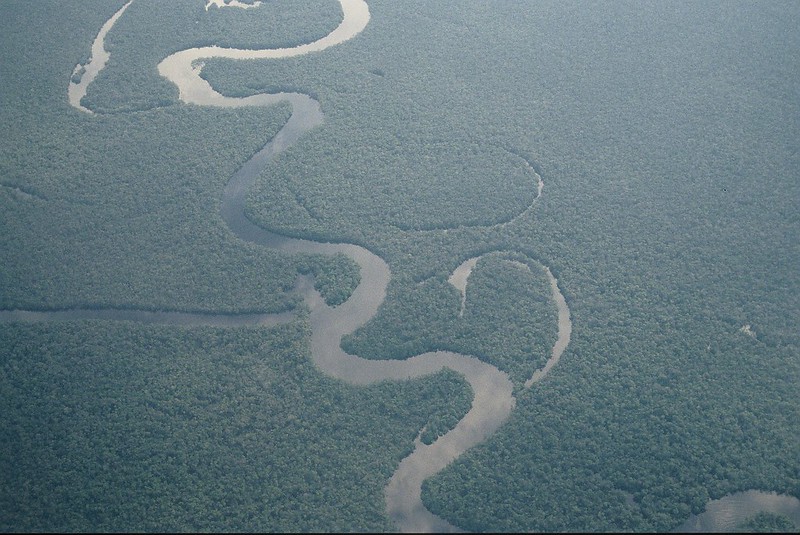The obsession to find the mythical “El Dorado” has haunted Venezuela since before it was called Venezuela. In a section of history forgotten by many people, “little Venice”, as the territory was known, was ceded in 1528 by the Spanish crown to a German family during the period of colonization. The German explorers searched but found nothing. Later, the Spanish King Carlos I recovered the land that contained so many promises, alleging breach of contract.
The legend seems never to have died, always arousing the interest of those who want to take over the booty. In recent years, the environmental destruction of the Orinoco Mining Arc in Venezuela has raised alarm bells around the world. The latest report of the United Nations High Commissioner for Human Rights (July 2020), warns about the criminality in the area, deforestation, labor exploitation, corruption, repercussions on indigenous peoples, among others. Minerals continue to be a threat, instead of a promise of well-being for the country.
Illegal mining is common in the area, for example, in the 1990s, illegal miners from Brazil appropriated part of this business. In 2016, new measures promised to regularize the situation, but this didn’t happen. Nicolás Maduro’s government gave concessions to national and international companies and approved the extraction of minerals in an area of 111,843 square kilometers, between the states of Bolívar, Delta Amacuro and Amazonas, which is equivalent to 12.2% of Venezuela’s territory.
This land is home to more than 50,000 indigenous people and has a great diversity of mineral resources such as gold, coltan, diamonds, bauxite, iron and copper, adding up to an estimated 7,000 tons of reserves. The legal exploitation has been denounced by scientists and various environmental groups, since the plan for the use of natural resources did not take into account fundamental points of the country’s Constitution, such as the conduct of environmental impact studies and consultation with native peoples.
This recently established mining area is situated above protected indigenous territories and environmental reserves, in an area of great ecological biodiversity and one of the oldest geological formations on the planet. The danger lies in the soil and the water, because in order to get the metal, they open up holes and extract the water from the rivers.
Environmentalists are significantly concerned about deforestation in those areas that include reserves and national parks. The Mining Arc overlaps or extends over Canaima National Park (a UNESCO World Heritage Site), Imataca Forest Reserve, Caura Forest Reserve, Cerro Guanay Natural Monument and La Paragua Forest Reserve. In addition, the consequences of mining on the Caroní and Orinoco rivers and their ecosystems would be irreversible due to the use of mercury.
Although the government decreed a mercury ban in 2013, gradual actions to eliminate the process component have not been sufficient. Furthermore, according to environmentalists in the areas, artisanal miners still continue to enter the sites and use techniques that put the ecosystem and the inhabitants of nearby zones at risk.
According to the United Nations High Commissioner for Human Rights, Michelle Bachelet, in the Orinoco Mining Arc there are threats from criminal gangs that control access, mining operations and perpetrate extortion in exchange for protection. The Commissioner points out in her report that there is a system of corruption where these groups maintain their illegal activities after bribing soldiers.
Bachelet also adds that, despite the large military presence in the area, the authorities have not investigated cases of human-rights violations. The report notes the increase in cases of sexual exploitation, prostitution, child labor, human trafficking and worker exploitation. In addition, it indicates that these groups are punishing those who do not abide by their rules, through beatings, shootings and killings. According to the data they handle, in recent years there have been allegedly 149 deaths related to mine control, where bodies are frequently dumped in old mine shafts.
In addition to the violence, people in mining areas live in precarious conditions. The stagnant waters resulting from mining are a breeding ground for mosquitoes, which has led to an increase in recent years in cases of malaria, affecting both workers and neighboring indigenous communities.
Indigenous populations also live at risk from the contamination of drinking water and food. For their part, criminal gangs maintain constant threats to these communities that include violence against women, sexual abuse and robbery. As a result, once again these native peoples are vulnerable by the greed of humans, who always want more without considering the consequences, but on this occasion, the dangers come from their own co-nationals, who do not respect the sacred value of this territory as the habitat of a great number of species and as an extensive vegetable lung for the earth.
Image credit: Christian Caron

